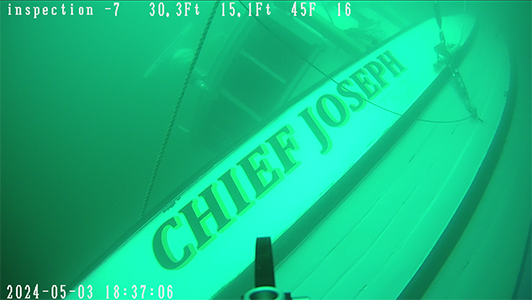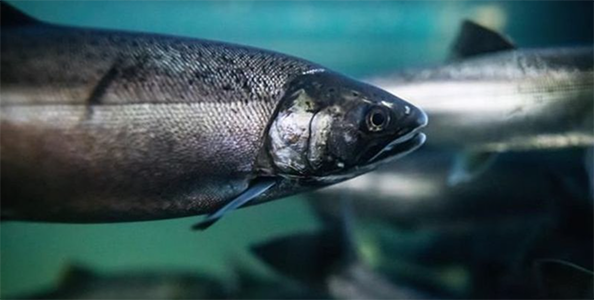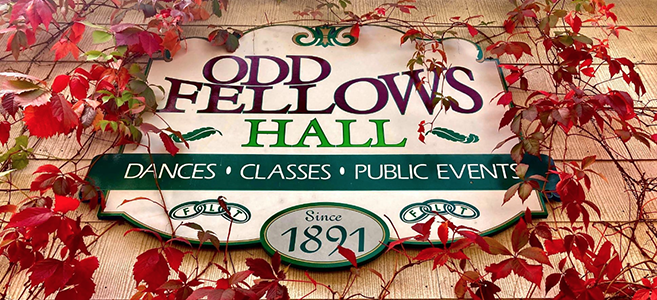||| MIDNIGHT MUTTERINGS by JACKIE BATES |||
My father, in his gentle way, insisted that we call things by their proper names. For example: A car has an engine. An electric pump has a motor. And so it was for shelled crawlers. A turtle spends most of its time in water. A tortoise is a land dweller who likes to get in water for short periods of time. (Don’t get me started on frogs/toads or bugs/spiders.) According to what I read today, my father may have been only partially correct about turtles. Here are the facts, straight from the internet. They are all turtles, but not all are tortoises. I’d take this up with Dad, but alas, he departed in 2000 at the young age (if he had been a giant tortoise) of 96.
A week or so ago, I heard an interview with Sy Montgomery and you can hear it too if you have nine minutes to spare. here: https://www.wbur.org/
Sy Montgomery has published thirty four books, some of them describing her time embedded, not with the military, but with several animal families. You may have read, as I have, The Soul of the Octopus, which is at the Orcas Island Library. Then there are more than thirty others, some for children. I think I have read, or perhaps heard her read The Good, Good Pig: the extraordinary life of Christopher Hogwood about a pig that was embedded from an early age with Montgomery’s family. That leaves 30-some books I haven’t read by Sy Montgomery.
Now Sy Montgomery has a new book out Of Time and Turtles, which I also have not read, because someone else got to it sooner. I am, however, first on the hold list at OIL. And, since I can’t talk about Montgomery’s book, I’m going to tell you about my own distant experiences with tortoises, and maybe one turtle.
In my early life on the the Cape Fear River, there were a number of family animals, but I don’t recall any tortoises/turtles. However, when I moved with my family to the outskirts of Raleigh, North Carolina, there were plenty of the species. My father built a couple of ponds on the property, the smaller, shallower one uphill from the house was not meant for fishing or swimming, but was home to a large Snapping Turtle, who remained unnamed as far as I know.
Occasionally, my father took me to visit him and lured him to show himself by dangling a piece of meat on a rope. (Not a string, as the snapper was a big dude.) Then my father would carry him to a shallow spot in the pond, which made the turtle angry. He was a Snapping Turtle after all. My father then extended a stout stick the turtle’s way, who couldn’t resist clamping on, and from there to the shore, carried by his ‘beak’ to the grass where we could spend a bit of time examining him and his show of temper. He did a hissing thing which made him drop his stick. After only a few minutes, he would give up and head for the water. Of course I was rightfully afraid of him and never tried to bother him by myself after my father warned me not to if I liked having all of my fingers. A few times I was aware that my older brother and his friends visited the turtle on their own, but I knew that telling on them would lose me my tagging-along privileges for other adventures involving homemade swings over water, BB guns and other forbidden excitement.
But, fortunately, there were the Eastern Box Tortoises. Lots of them. When it rained they crossed the ‘main’ road which was about a quarter mile up our curly driveway. If we were in the car, we picked them up and took them home to live near the larger pond, the one that was twelve feet deep in places, good for swimming, fishing and small homemade, mostly unseaworthy boats, and the one ‘real’ boat built by my father. There was a shallow part and sometimes we would see the Box Tortoises near, but not in the water.
My one pet Box Tortoise was delivered to me by our new dog Spot. Spot was a short haired Pointer, a hunting dog. He was cheerful enough I suppose, but not the soulmate Winston Churchill had been for me. In any case, Spot appeared with tortoise in his mouth. Of smallish size and thoroughly wet with dog spit, the tortoise was handed to me without comment. I took her (I would find out later) into the house and set her up in the small, shower only, bathroom where she lived for the next year or so.
Box tortoises can shut themselves completely up into their shells so that no flesh shows except a slim tail which is tucked under the rim of the top shell. The bottom shell has a hinge that encloses the head, neck front legs that cannot be pried open without doing permanent damage. You simply have to wait until the tortoise chooses to trust enough to let down the flap and emerge to the degree she chooses.
I’m not sure what the tortoise did when alone, but I saw nothing of her other than shell for a few days. I picked her up and talked to her softly, but she showed no sign of needing my friendship. I left for food her and sometimes it seemed some of it was missing, and there was evidence she crawled into the pie plate of water while I was gone.
Then, a few days into her captivity, when I went into the bathroom to visit, she was part way out of her shell and she didn’t close up on my arrival. Even when I picked her up for conversation she stayed partly revealed. We looked each other into the eye and that’s when I knew she was a girl tortoise. She had brown eyes and males are red eyed. If I gave her a name it didn’t stick permanently or I have forgotten. The description on the web says Box Tortoises don’t usually like to be handled, but neither us had read that and I handled her all the time and she seemed to like it. I took her outside daily if the weather permitted and at 5:00 each evening, I fed her. Usually raw hamburger and fruit. She seemed especially animated (if you can say that about a tortoise) about cantaloupe. She also got some raw vegetables, dog food, and grass if we were outside.
That’s how we carried on for some months until my grandmother came to visit. A germaphobe and of the old school of child rearing, she refused to share her bathroom with a wild critter and Tortoise was dispatched without ceremony. (My grandmother—not Grandma, or Granny or Meemaw or Nana) was less than impressed that her eldest daughter had gone to live in the woods with her husband and a bunch of cats, horses, cows and whatever snakes my brother kept for company. Not to mention the four unkempt children. And so, I took Tortoise as directed to her new home near the big pond.
And that was that for a few days. I tried to find her without success daily. Then, about a week later, at exactly 5:00 PM my father sighted her coming over the long hill between the pond and house. I wouldn’t have been more excited if it had been baby Jesus crawling through the grass. I immediately got her dinner and she dined al fresco in the backyard. I left her in the yard after dinner, but she was always out of sight we we left for school in the mornings.
That pattern went on for days or weeks until she appeared one evening with a couple of friends. Even later, one evening we saw a line of tortoises. I don’t remember exactly how many but in the neighborhood of ten shelled beauties, coming over the hill.
I have no memory of how it stopped; maybe it got cold enough for hibernation. But the next spring there were no dinner guests climbing over the hill. We still occasionally saw and picked up Eastern Box Tortoises when we saw them on the land, but they immediately closed up tight, so I assume none of them was mine.
And yes, there were other crawling, shelled reptiles in my life after that. In California, my kids had (before it was determined they carried Salmonella) a Red Eared Turtle that kept outgrowing his tanks. Until moving day. There dad put him on the patio while he cleaned the tank, and when he returned to the patio,Turtle was gone, never to be found that day or ever after when neighbors kept looking for him after we left until they finally gave up.
Then a couple of decades ago, I was lucky enough to go on a kayak trip in the Galapagos Islands where we spent one day at the top of one of the ‘mountains’ where the Giant Tortoises mate. Not to be too indelicate, it is a feat. The males live at the top of the hill and the women have an arduous climb for the privilege. Mating takes all day (average: about 8 hours) and there is a plaintive mooing sound that accompanies the exercise as well as a Tortoise best man who waits perpendicularly to the active couple. His role was never satisfactorily explained to me. I did ask our guide, Robbie, who was mooing? He answered it was the male of the couple. That ‘she can’t even breathe under there.’
Well, they are magnificent creatures. And according to the internet, the oldest surviving land animal is Jonathan in the Seychelles. Hatched in 1832, according to the Dodo website, Jonathan lives on the grounds of the governor’s mansion on the Island of St Helena.
Here’s a closing quote from one of his veterinarians according to the Dodo website:
“In spite of his age, Jonathan still has good libido and is seen frequently to mate with Emma and sometimes Fred,” Joe Hollins, one of Jonathan’s veterinarians, told the Guinness Book of World Records. “Animals are often not particularly gender-sensitive.”
It’s a very calm life for someone of such status; he’s so popular that his portrait is even on the back of the small island’s five pence coin.









You are the BEST midnight mutterer/storyteller/ literary meanderer. I enjoy your mutterings – they often make me laugh – and I learn stuff too; like the difference between turtles and tortoises. Thanks, Jackie!
Ditto what Sadie said.
Who knew a tortoise treatise could be so delightful?
I have 2 box tortoises that I have had for 40 years, so I really enjoyed this article!
Thanks for such kind words Sadie, Eleanor, Brian, and Alison, and for not mentioning my constant nemesis: typos that hide until publication. And Alison, where are your box tortoises? Do they ever appear in public? What I would give to see a 40 year old Box Tortoise again after all these decades! jb
Any typos encountered by the Editor are quickly corrected. The problem seems to be the Editor not catching all the typos.